Peter Ismert joined me on safari in Luangwa in 2018. Soon after returning home, he booked again for 2019! This time he was joined by his wife and two fellow photographers from Colorado and we all hoped for a great week of sightings and photo opportunities. We couldn’t have asked for more; it became almost a joke that anything we mentioned ended up appearing and we only had one outing from the camps where we were short of sightings to photograph — pretty incredible in a 10 night trip!
It’s always a pleasure to have guests for an extended time since it allows me to get to know them, help with cameras and techniques, and we are also not under pressure to move from sighting to sighting. We can simply sit and see how Nature unfolds. I really enjoyed my time with Peter, Michelle, Sherry and Scott and hope our paths cross again. In fact, Peter is already talking about a Zambia trip in 2020!
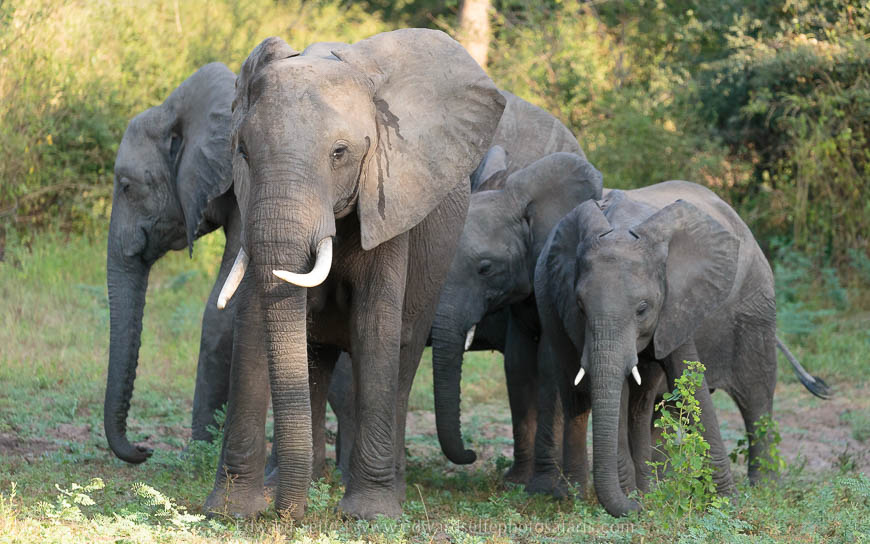
We started at Track & Trail River Camp on the edge of the National Park. Our first afternoon outing was spent getting back in practice with cameras and allowed me to understand my guests’ capabilities. It’s so important for me to know what each person’s skills are so that I can tailor advice to suit. But it wasn’t long before we needed to switch into serious shooting mode because we came across a leopard with her two cubs not far inside the park gate! The light was dropping fast, so we had a chance to combine photography of moving subjects, low light, spotlights and animal interaction right from the start; we were all thrilled even though this was a very challenging first sighting!
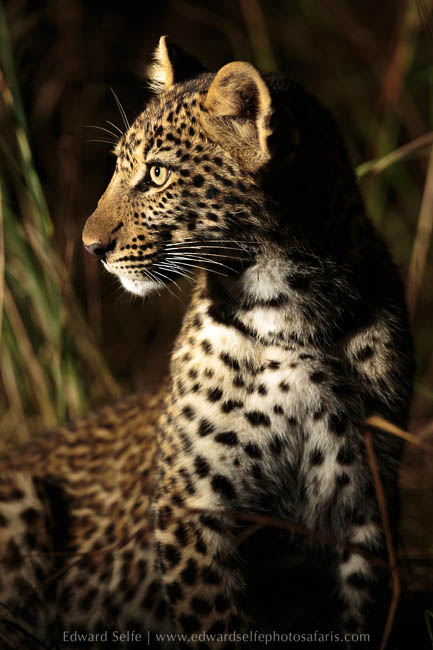
We were very pleased with the first afternoon’s sightings, but all hoped that we might find the leopard family in the morning when the soft light would be easier to work with. Knowing that they had a baboon carcass in a nearby tree, we crossed fingers that they’d be in the same area the next day. We needn’t have worried; we found them where we left them and they gave us 2 hours of incredible sightings.



There’s always a concern that when we enjoy an incredible sighting very early in a safari, that there will be a slow down afterwards. However, this is rarely the case in Luangwa, with the density of game always offering something special for visitors. The rest of that day offered plains game, a leopard who had lost her impala kill to a hyaena (we arrived on the scene as she was feeding on the left-overs) and some superb light in the late afternoon.

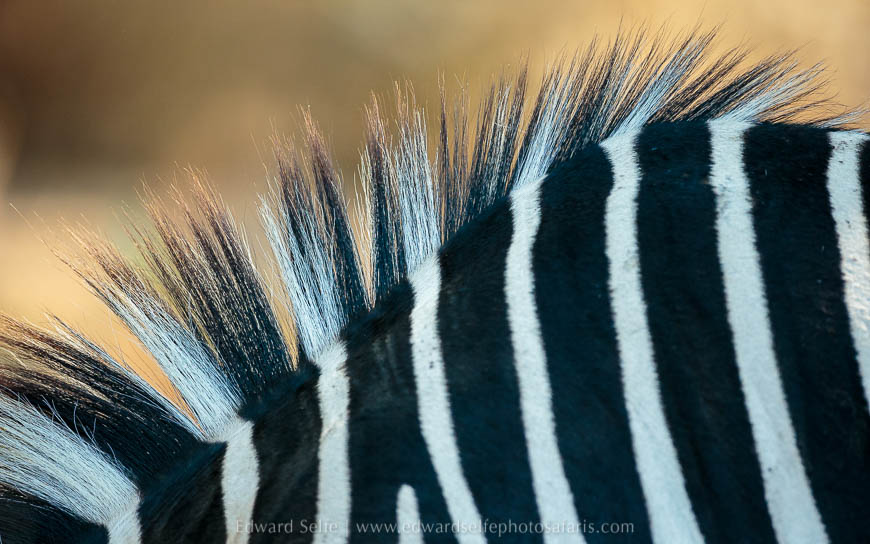
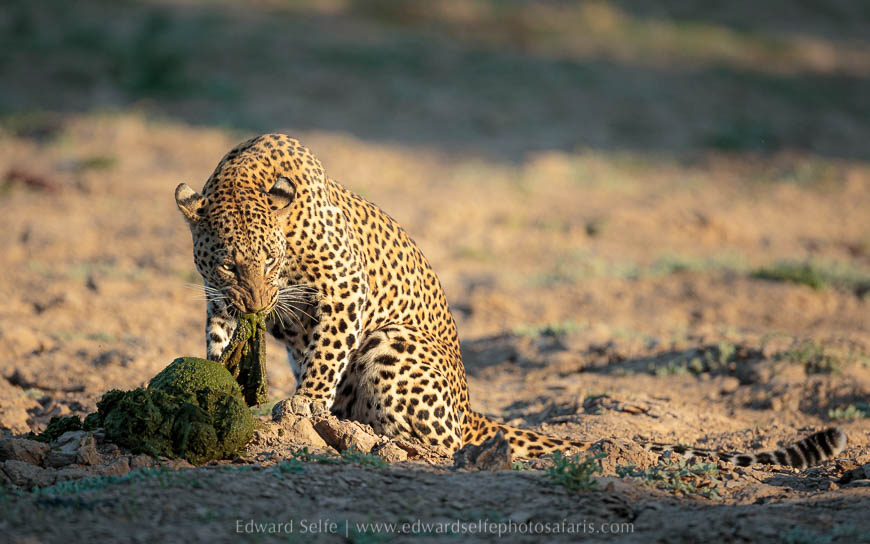
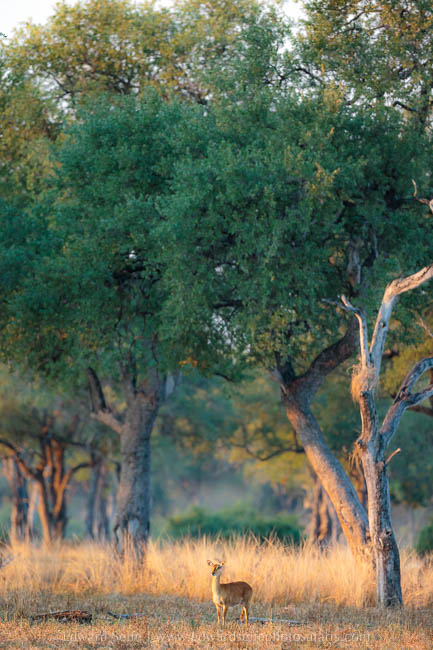

Over the coming days, we moved through different zones of the park, targeting my favoured areas for elephants, leopard and a small lagoon where I have repeatedly seen the “tamest” pair of crowned cranes in Luangwa. We had a fantastic afternoon with a nearby leopard who was hunting in the drainage gully…she seemed in the perfect spot to take a puku but instead chose to approach an impala ram over open ground. He saw her, but we were able to take incredible photos from the low-level of the drainage channel.
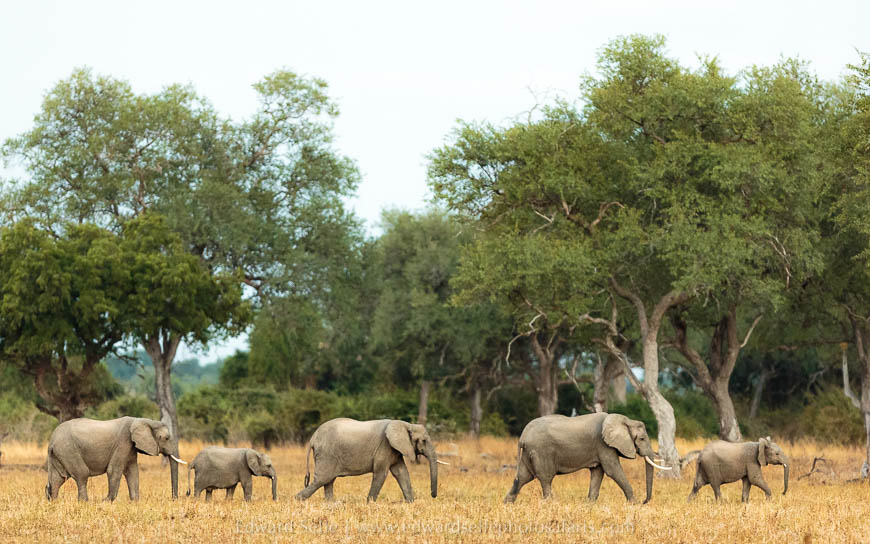
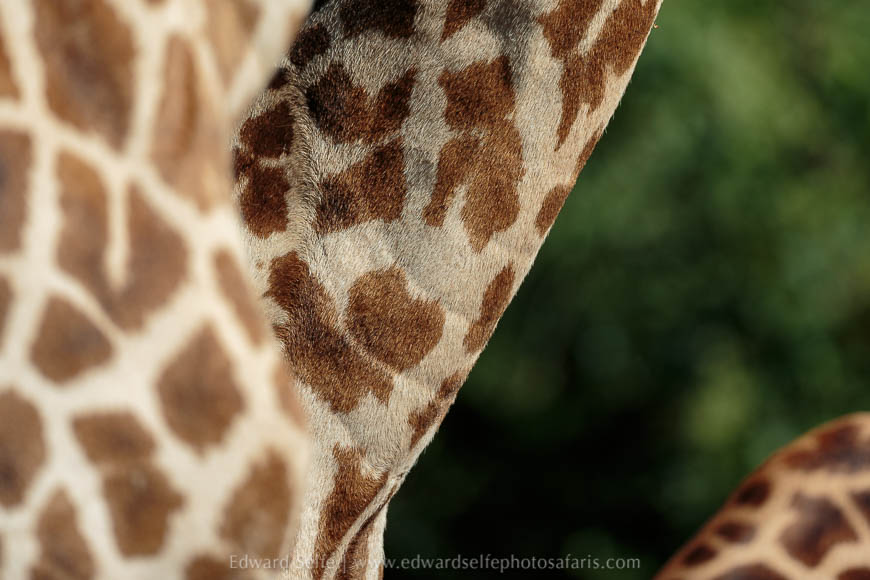


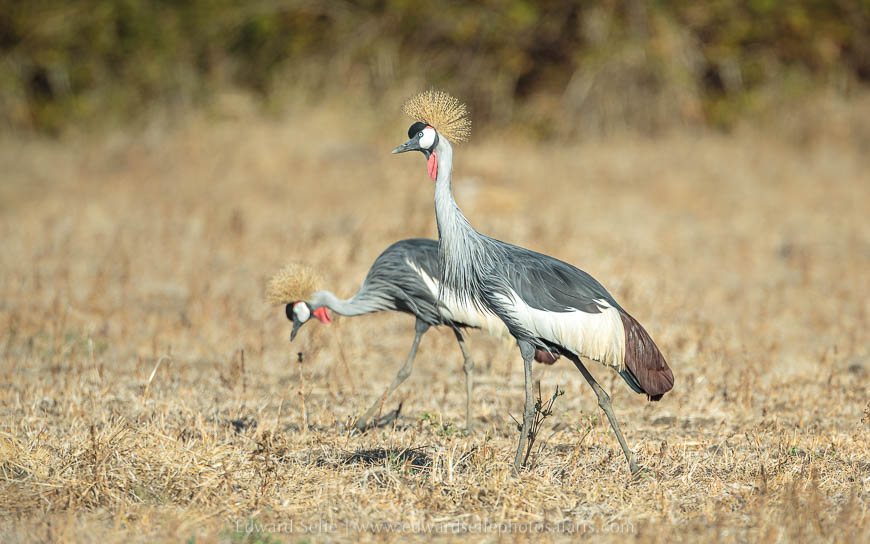
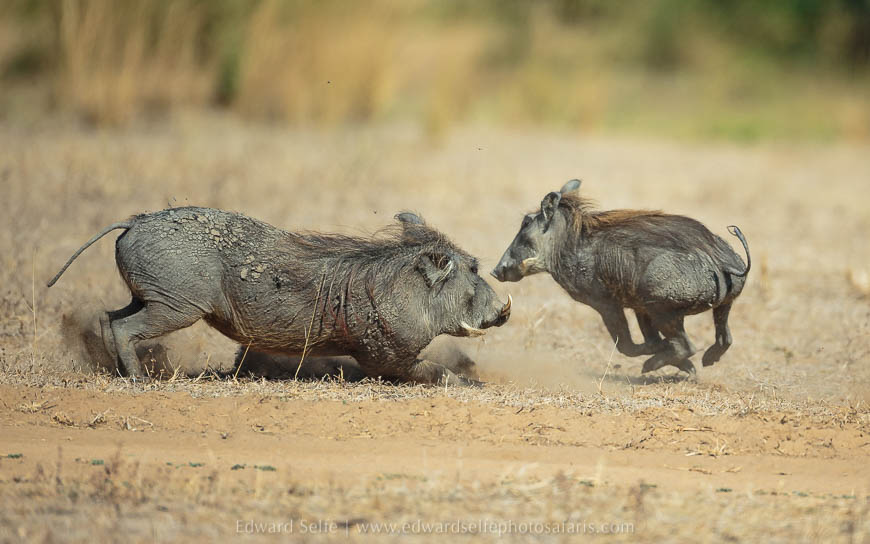
It’s always a treat to see wild dogs, especially as they are heavily endangered, so we took the chance to look for them one afternoon. We found the dogs, heavily bloated from their morning feed, but still alert to the presence of antelope nearby. We were lucky that they had chosen a resting place that was very close to the road and also on a slope above us, so when they stirred, we could make low-level backlit shots of them against the dark earth. As the pack roused in the late evening, we followed them and watched as they terrorised a small crocodile on the road!!
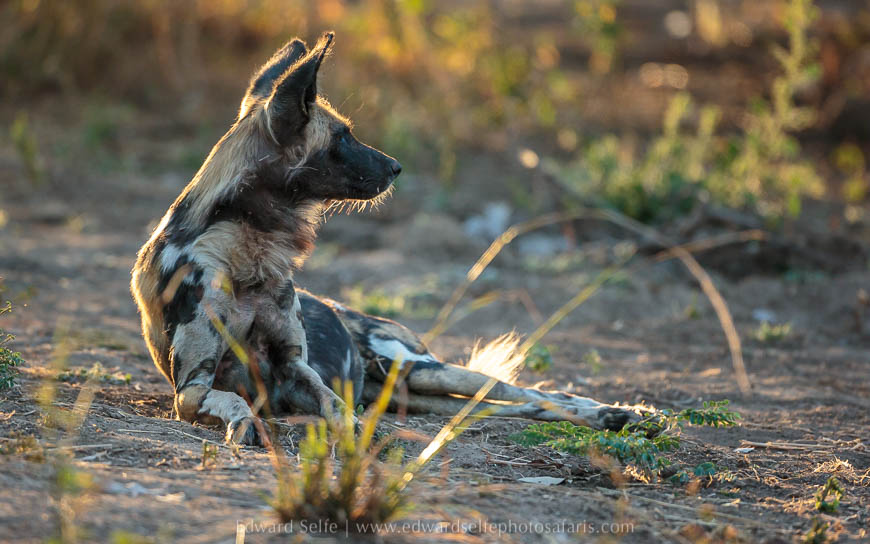
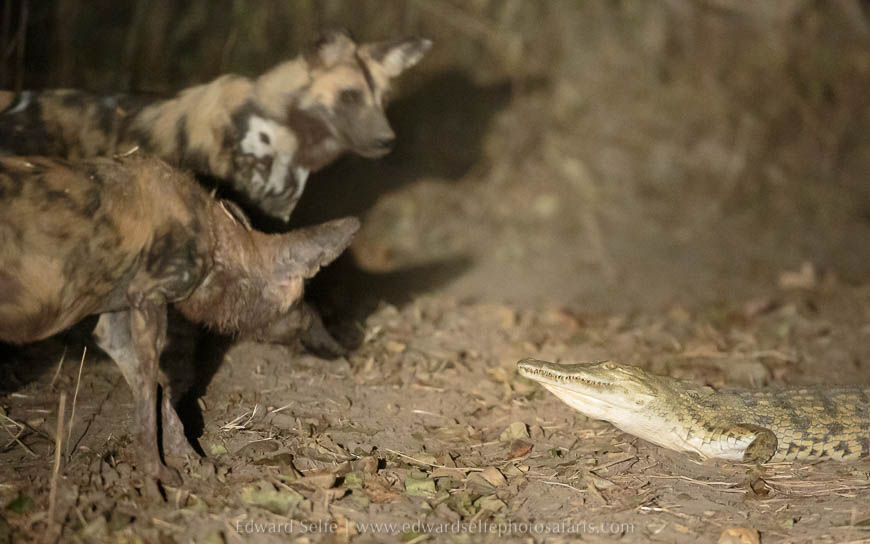
The next morning, we had no plan, so we moved carefully through likely habitats and took time with the sightings along the way; there is often a feeling of needing to “go somewhere” each day, but some of our best sightings were just inside the national park or very close to the camp at Lion Camp. In our haste to go somewhere, we sometimes pass these by.
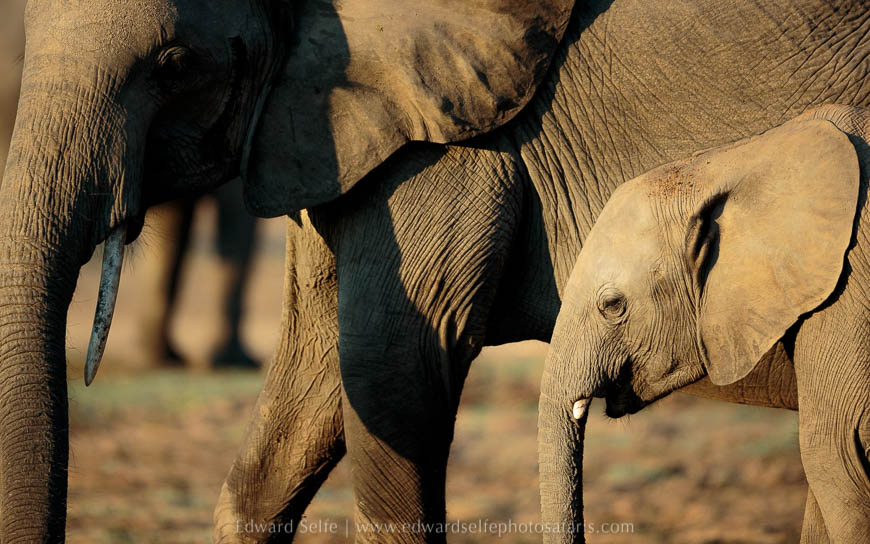
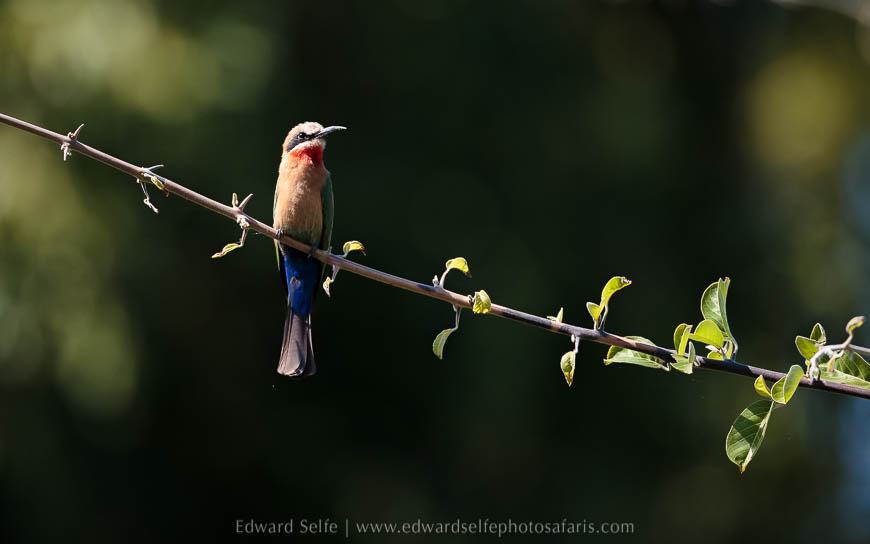
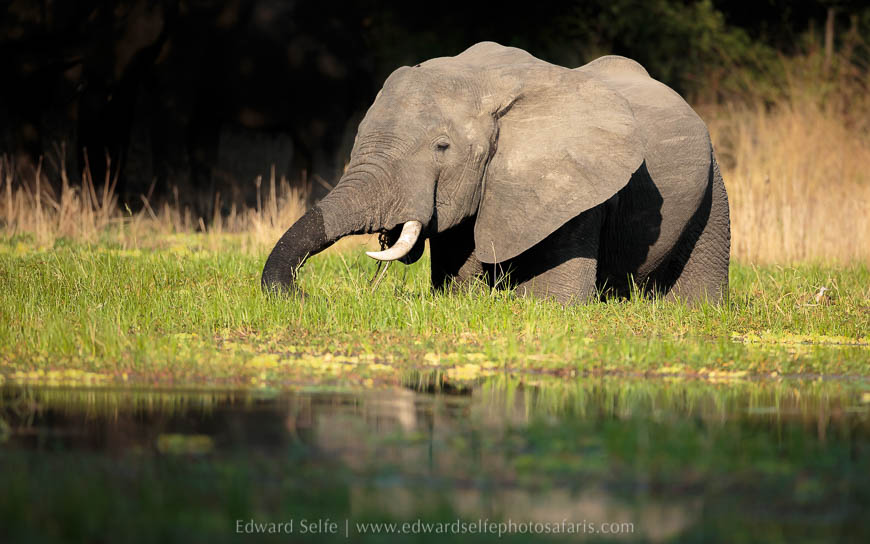

We’d had a superb time at Track & Trail, including great food and hospitality in the camp, but we were excited to head to Lion Camp for our second 5 nights. The area around Lion Camp is one of my favourite parts of the National Park and always rewards with incredible sightings. Lion Camp is also perhaps the best appointed camp in the area, so the experience there is stunning; great food, lovely views from the main area’s decks, a low-level hide, a photo editing room and beautiful accommodation.
We had been missing out on lion sightings in the central area of the park; sometimes the lions move to other areas and sightings can be over-subscribed when they do show up. So I was very keen to make up for this at Lion Camp. It didn’t take long. On our first afternoon, we found them near camp (located by circling vultures above) and enjoyed them rousing, grooming each other and then setting off for hunting. Despite their best plans, the hunt didn’t work out so we left them to continue and headed to camp.

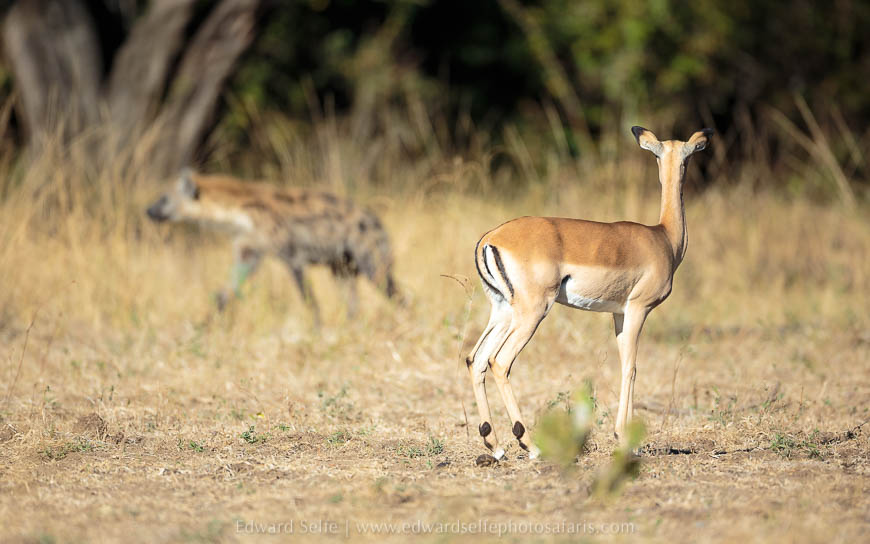
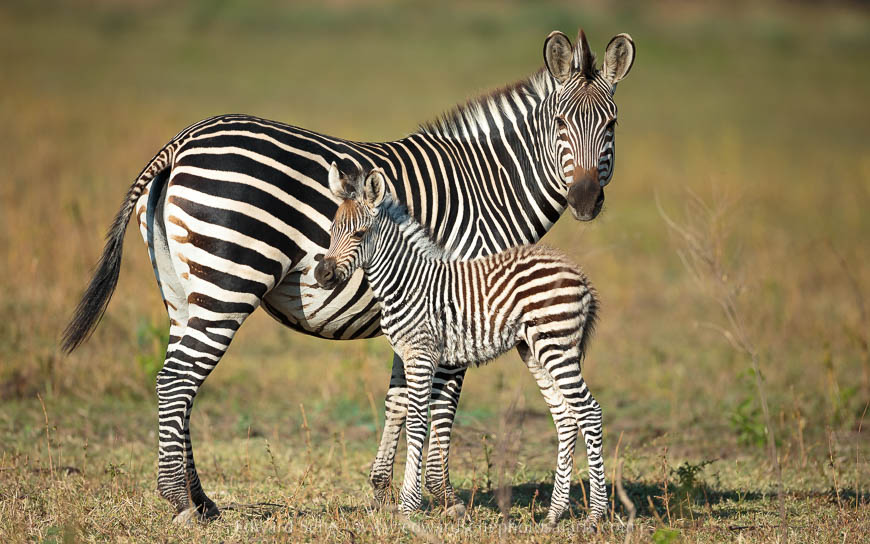
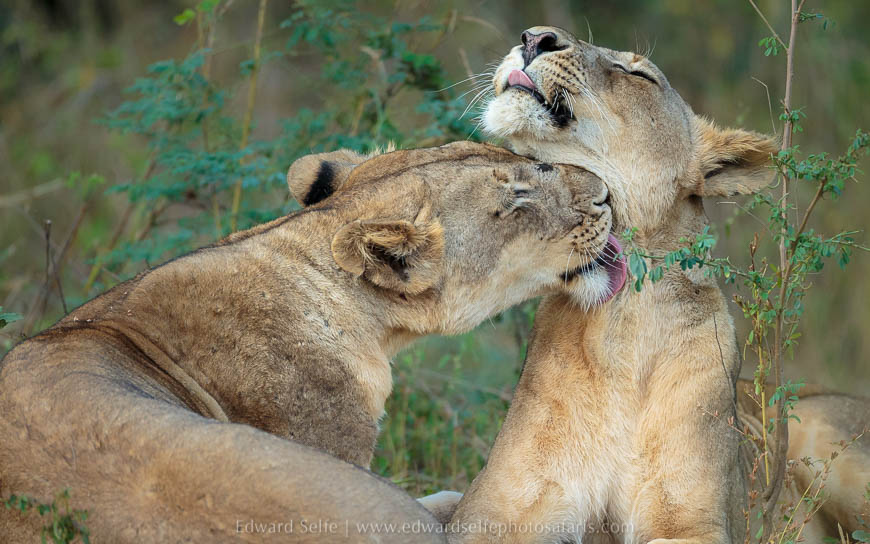
The following morning gave us wonderful pink light on a resting hippo, and we spent the best of the light shooting Lilian’s love birds on Lion Plain. These small and speedy birds are a Luangwa speciality and getting good shots of them is very hard. Persistence paid off however, and we all got close ups in the end.

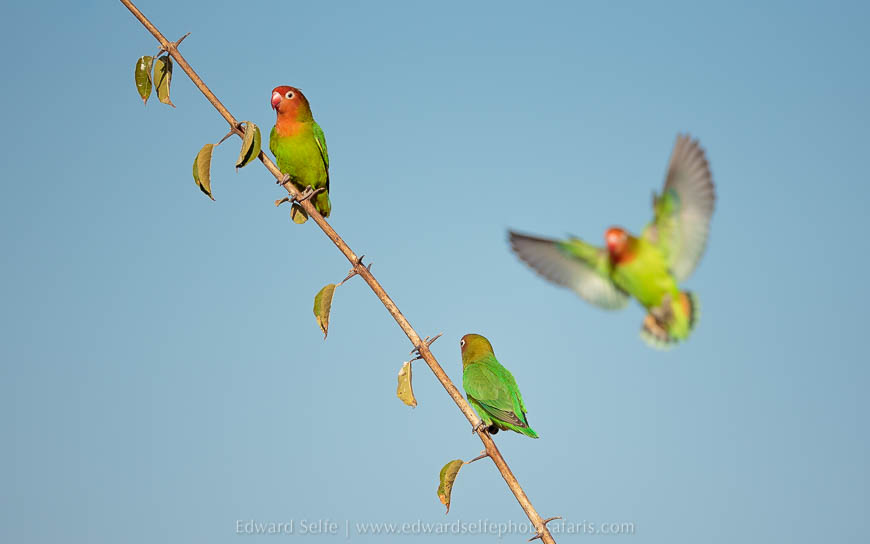
In the afternoon, we decided to spend time in Fish Eagle lagoon where a young leopard known as Chiphadzuwa likes to hunt. Like many of Luangwa’s leopards, she thrives on behaving unexpectedly and often hunts by daylight when antelope are less alert. We found her resting in the drainage channel (a recurring theme!) and decided to stay well back and watch to see if she would hunt. Indeed she did, but was soon spotted by the puku and had to hide again while the antelope settled down. As we left her in the late evening, the antelope were moving out of the area to safe, flat ground and we wondered if she would successfully hunt that night.
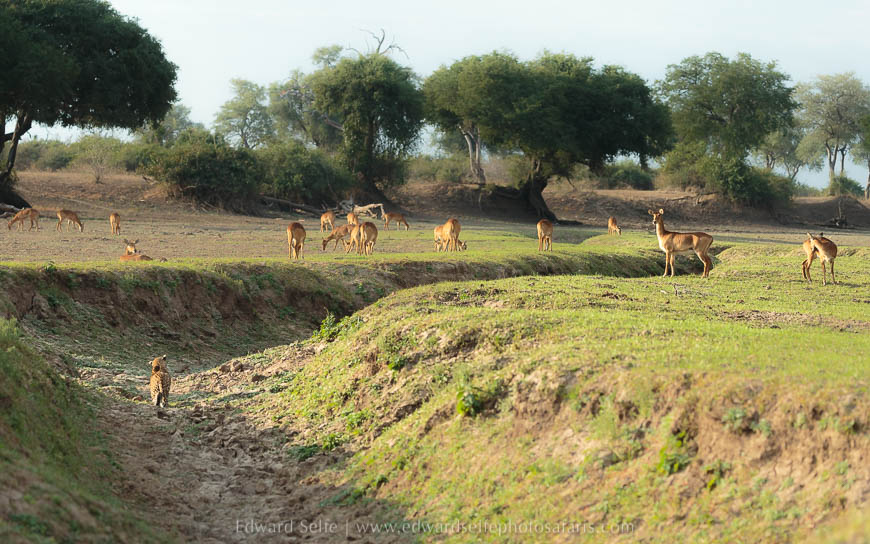
We went to look for her in the morning, hoping to find her with a kill, and in fact found her hunting in almost the same place! With a cub to feed, we knew that the antelope which were moving into the surrounding grassland would be a crucial target for her, so I drove well back and watched the antelope move towards the gully where she was hiding. Out of sight from us and the antelope, she moved along the bottom of the gully and closed the distance from her to the herd. With lightning speed, she exploded out of the channel and flattened a puku 15m from the gully and about 30m in front of us!!
This took us all by surprise, as all leopard hunts do. When we are watching the leopard, there is usually too much attention on her, the antelope notice it and steer clear. But this had worked out perfectly for her and us — we had been close enough to witness the action, but far enough away not to impact the outcome in favour of either hunter of prey.
It was an amazing scene and I could feel the excitement of my guests in the back. Over 10 years in the bush, I’ve seen this a few times and learned how to keep calm in very exciting moments like this, crucially making sure not to disturb the leopard or the natural course of events. I offered some suggestions on required camera settings, and then talked quickly through my plan to get the best locations for photos. I knew that the leopard would drag the puku back into the gully to hide it. She would then take it through the gully towards the tree line on the far side. So we had to take the road across the channel and wait on the other side. As we did so, she started to drag the carcass towards us and we got a low-level front on view.
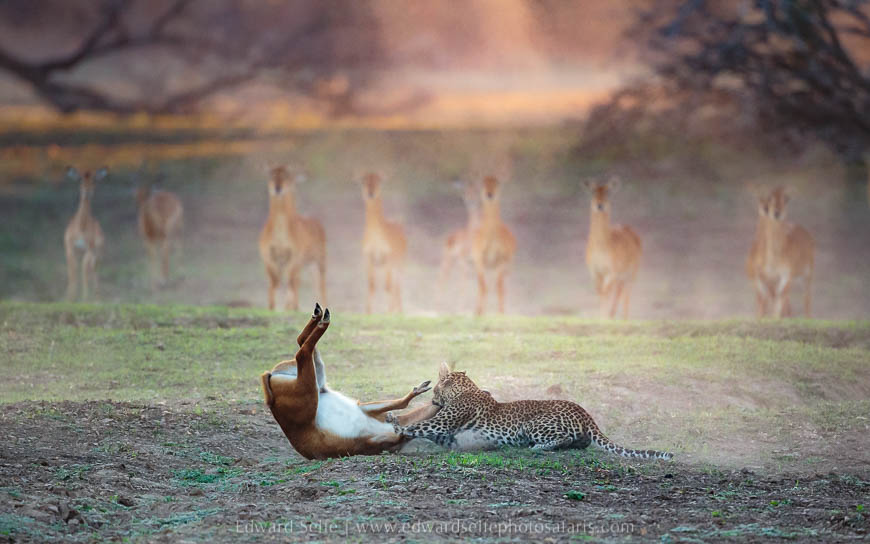

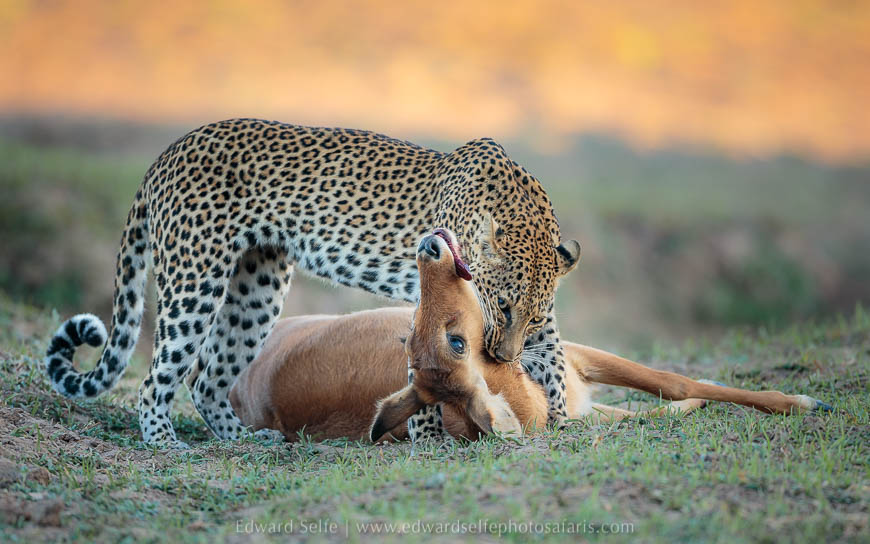
We hoped that the leopard would drag the carcass up into a tree, but it was a pregnant puku and seemed too heavy for her. She secluded it on top of a termite mound where she and it were almost hidden, so we moved off and hoped the situation would change before the afternoon. Most importantly, I wanted not to cause any disturbance to a leopard that has a cub and needs to ensure that the youngster feeds on this precious prize.
We took some time with a large herd of buffalo in the afternoon. The light and wind worked in our favour so the herd came closer and closer, feeding and sniffing the air as they approached. It’s very dramatic be able to photograph these large herds from close up, especially in the stunning environs of Lion Plain.
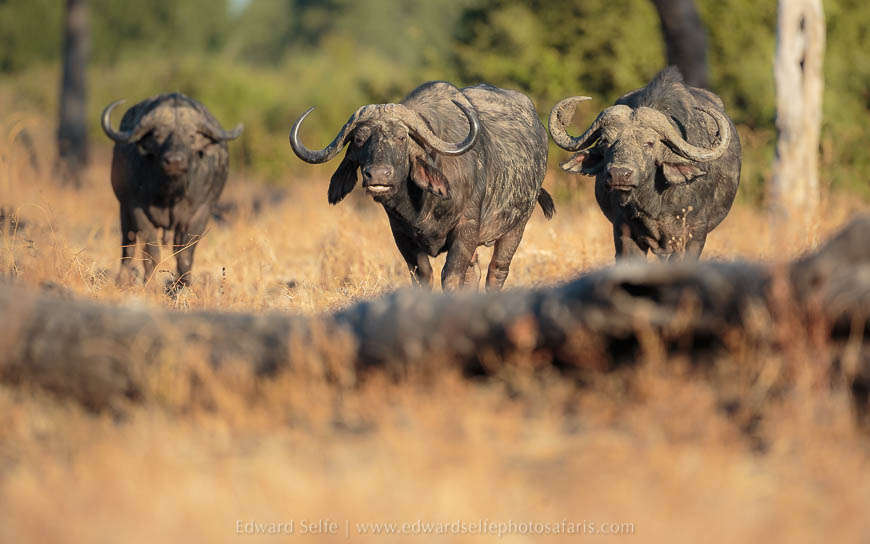
Returning to the Puku carcass, we found a leopard leaving the scene. I could tell immediately that it was not Chipadzuwa and I wondered if she was still there or had been chased off by the intruder. But she was still there, resting behind the termite mound so she had surprisingly tolerated the arrival of the unknown female leopard. With no shots to be taken at the carcass which was still hidden on the mound, we left, not wanting to draw attention to the scene as the light fell. We were dismayed to find that a hyaena had stolen the carcass when we returned in the dark, proving the importance of hoisting a kill into the trees whenever possible.
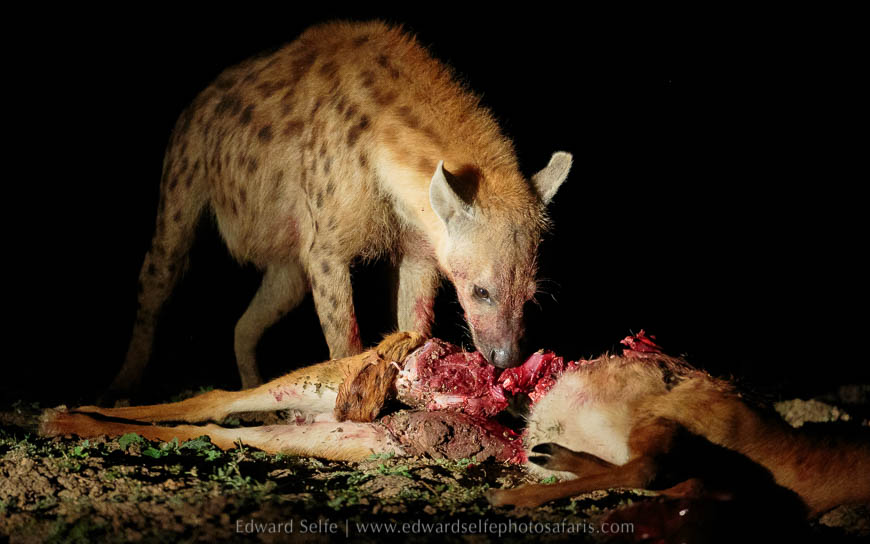
Having followed this story for a day and a half, we felt bereft when it ended, especially with an outcome such as that. We wondered what could possibly follow that so but we set out the following morning to see what Nature would give us. Early on in the drive, I picked up the smell of lion droppings which I think I had driven over with one of the wheels, so I was on high alert. Almost immediately, we found one of the “Nomads”, a group of 4 big, young male lions who took up residence in the Lion Camp area last year. They were very aggressive in 2018, challenging the females on kills and causing a lot of injuries, but they seem to have settled with the Hollywood pride and are generally a protective force for the lionesses in the area, keeping out other males.
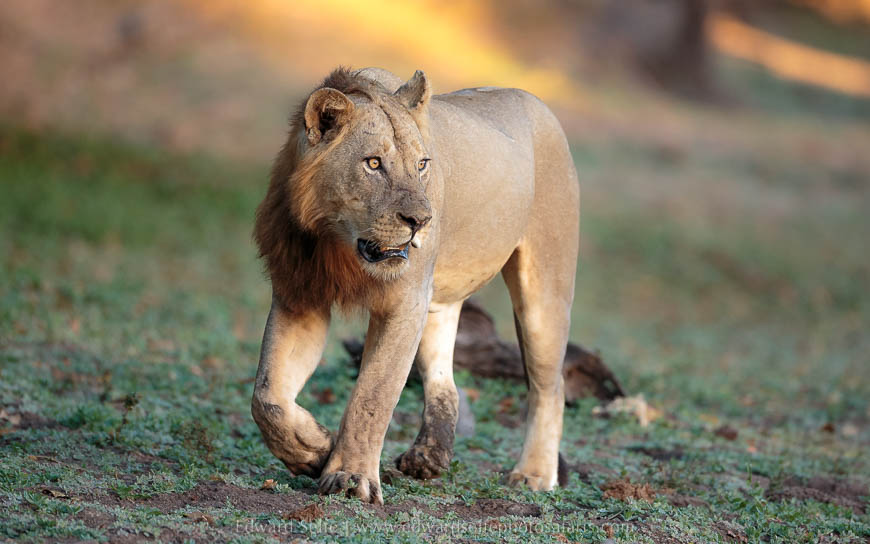
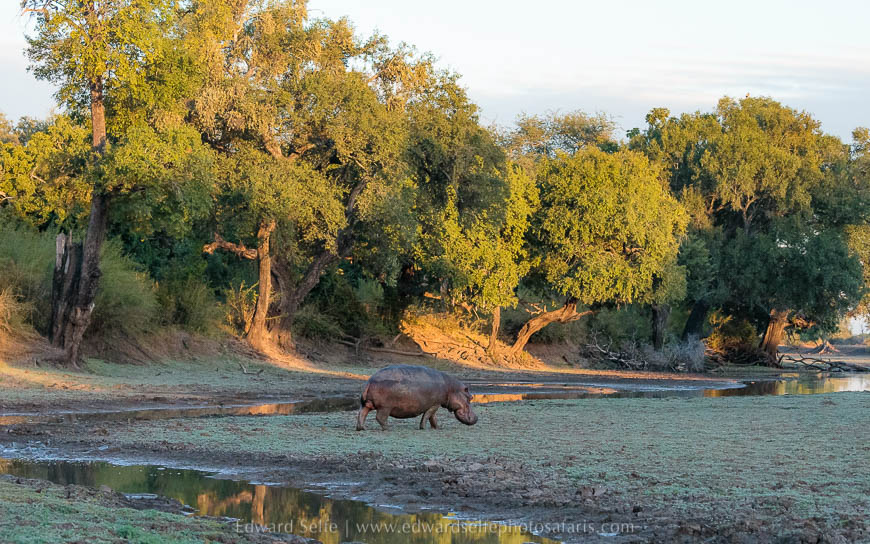
We followed the young male as he reunited with one of his 3 “brothers” and they sniffed the air. Eventually they led us to a lagoon where there was a dead hippo floating in the shallows. They appeared very interested in this free meal, but made no attempt to enter the water where there were many crocodiles waiting to feed. We were really excited that we might have another “story” which we could follow over the coming days.
In the dry season, hippos die regularly from injuries caused by social compression in diminishing water, or nutritional compression from lack of forage. Those that die are a huge food source that can sustain a pride of lions and/or crocodiles for days on end. Strangely, the young males moved on — perhaps they knew that the carcass was still complete and they would not be able to break it open — and we stayed to shoot the waterbirds in the shallows of the lagoon.




We now had to guess when the hippo carcass would decompose sufficiently to allow the crocodiles and other scavengers to access it. The period immediately after the carcass opens up is when there will be the most competition between predators and the time when interaction between them is most likely. We were fortunate that it was during one afternoon that this moment came. We arrived to find an old lioness resting near the carcass. She would have picked up the smell and approached hopeful of a free meal. But she was not confident of her ability to break open the carcass and fight off the crocodiles, so she waited. While we watched, another lioness appeared (a prime female from the Hollywood Pride who has cubs nearby) and the old female moved away. The new arrival observed the situation for a while and then started to approach the carcass. We wondered if she would dare to challenge the crocs which were starting to nibble at the eye sockets, the ears and the mouth of the hippo.
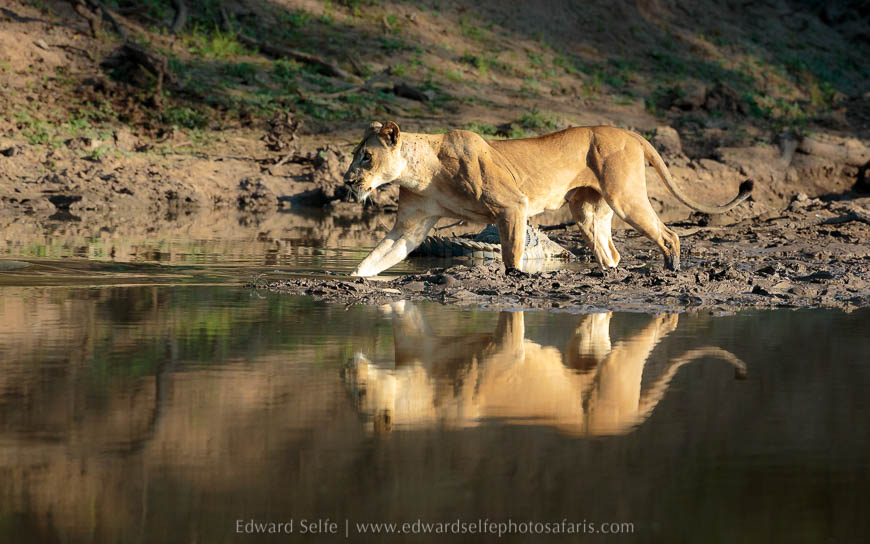
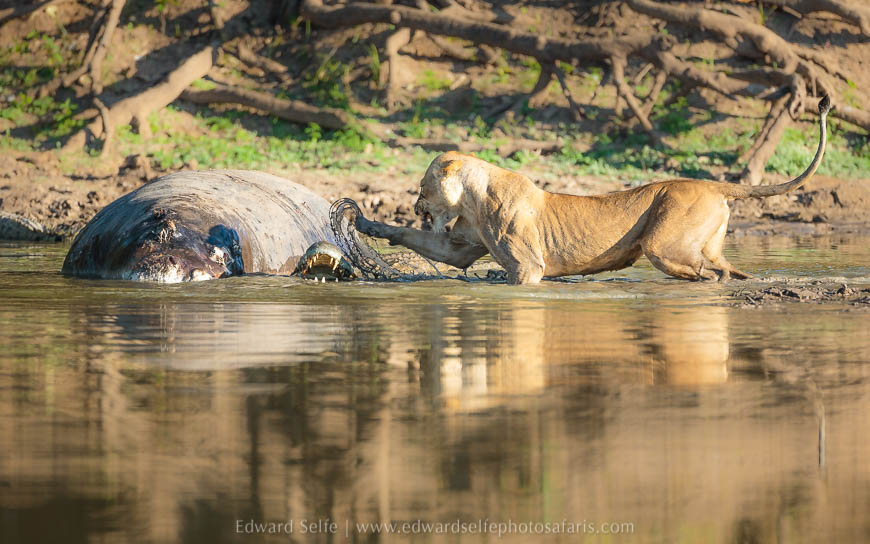
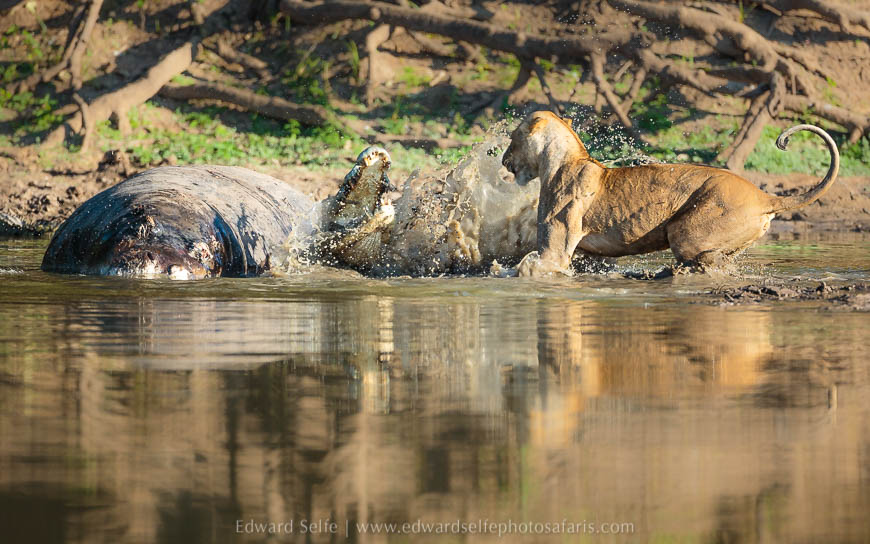
But in the end, she prevailed and dominated one side of the carcass while the crocs fed from the other side! What a scene! We watched as she filled her stomach with the putrid meat, happy to know that this meal would support her milk supply for the hungry cubs. After the light dropped, the lioness left the carcass to the crocs and we moved away and took photos of the hundreds of guinea-fowl which were coming to the lagoon for a last drink before roosting.

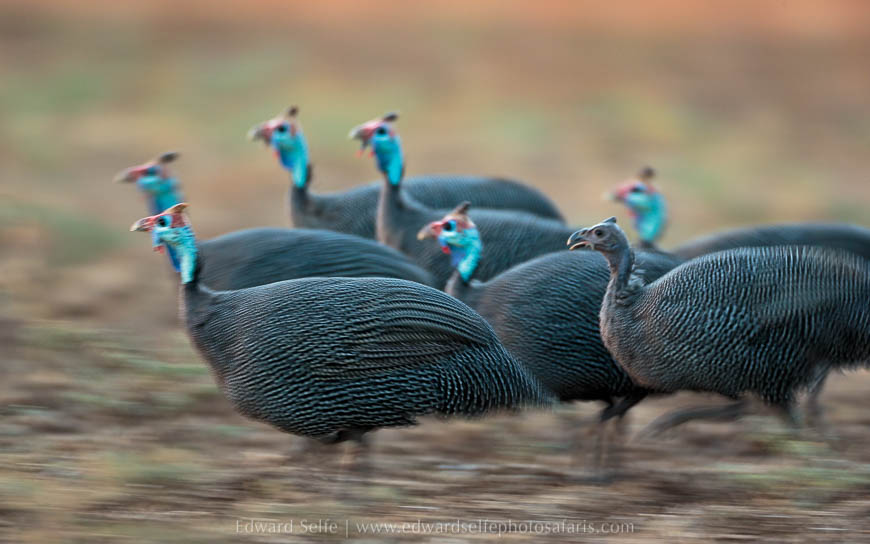
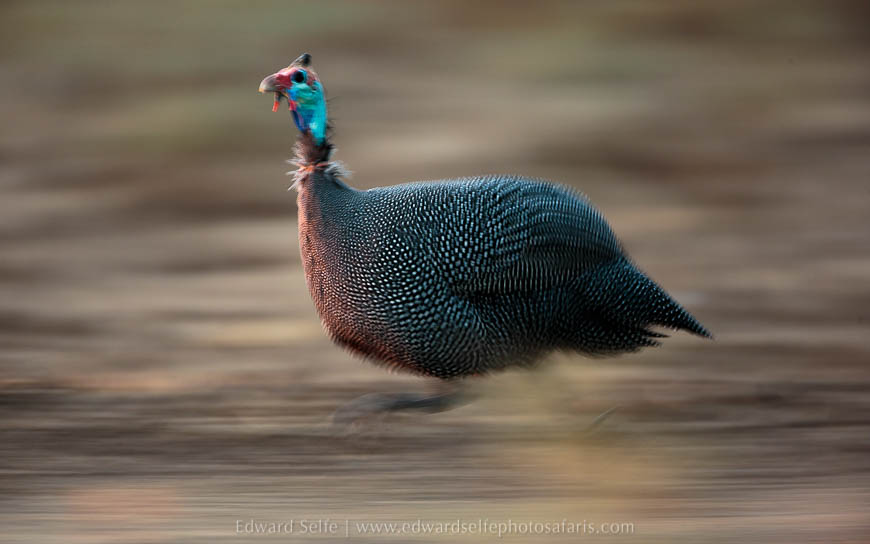
That night, we stopped at a massive baobab tree to create some stylised shots of the Milky Way with the tree below. Using a soft light, we sidelit the tree to bring it out from the background. Throughout this hour long shoot, the two young male lions called nearby; it was one of the best experiences of the trip!
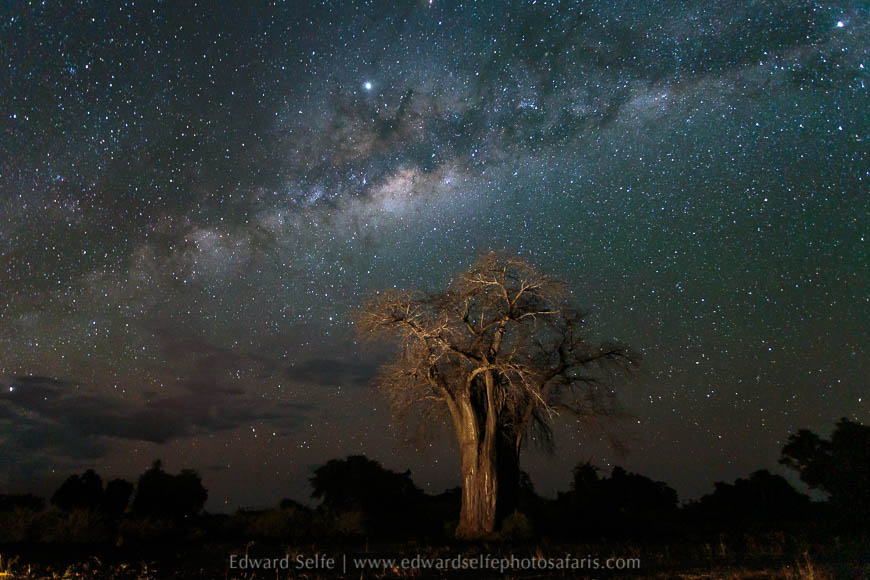
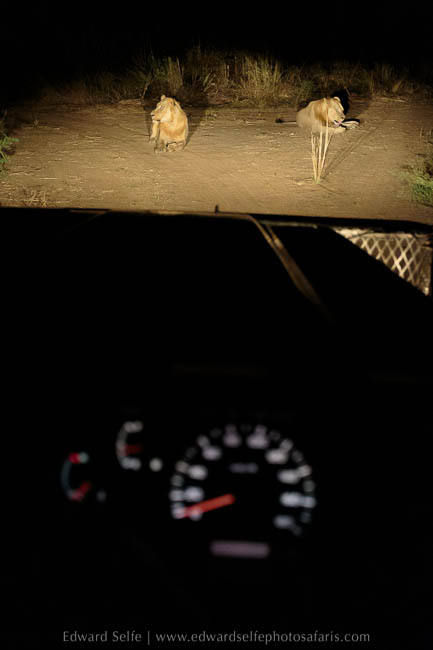
We wondered if there would be more action at the hippo carcass in the morning so we headed there early to see if the rest of the Hollywood pride (or perhaps hyaenas) had moved in to feed. There was little change so, out of interest, I followed the calls of squirrels to a nearby thicket area, and we found a huge male lion approaching, presumably to take his share of the carcass. He must be one of the best looking lions in the Luangwa so we were thrilled to see him on our last morning. He was tentative in his approach, probably aware of the territorial boundary that he was crossing to be there, but quickly rounded the lagoon and started to feed! What a way to end the trip!

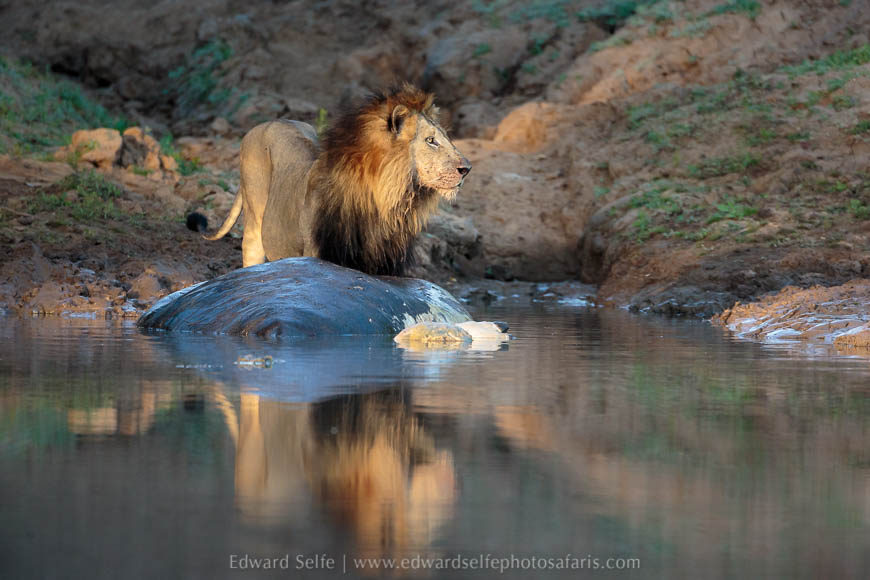
After the light had become too bright for the contrasty shots in the lagoon, we moved off to explore some new areas; we ended the morning with a great sighting of a small pack of dogs in the back-country! They were mostly resting but changed positions a few times, allowing us to capture slow-motion panning blur shots as well as taking portraits of the dog-pile.
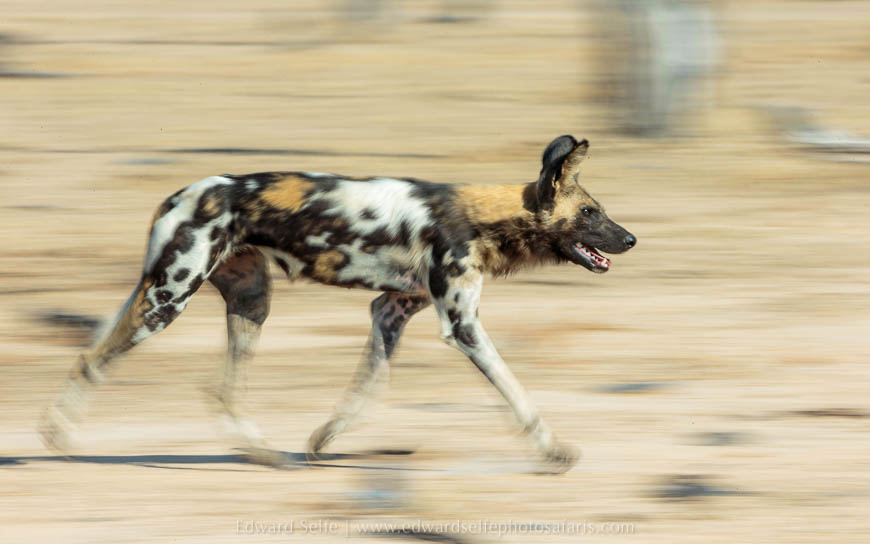

We had a fantastic safari in the Luangwa; choosing to stay for an extended period gave us the luxury of sitting quietly on sightings and taking time for events to unfold. Nature cannot be rushed and the benefits of taking it slow are evident. Thanks for reading to the end. If you would like to travel with me in the South Luangwa in 2020, please get in touch soon as I have 7 fully booked trips already for 2020 and space in the prime months is running out.



